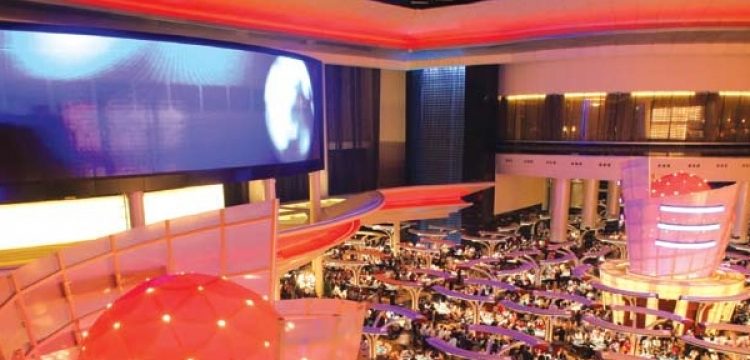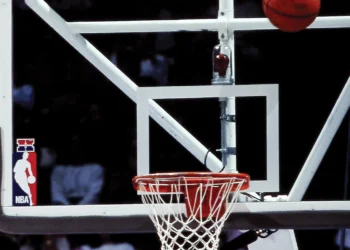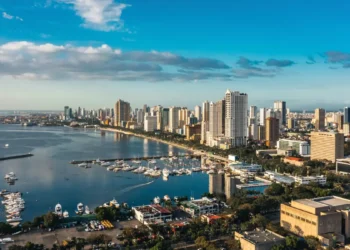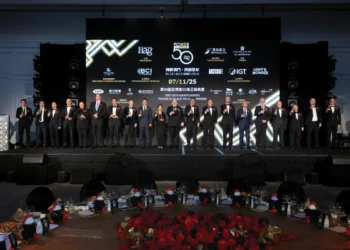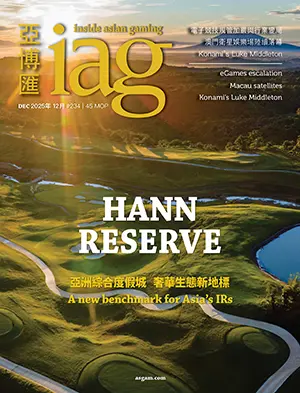VIP play will always grab the headlines, but it’s the small bettors who are writing the future of a more profitable Macau
Investors in Macau’s six listed casino operating companies have been spending the second half of 2012 absorbing the shock of gaming revenues that may increase this year by the equivalent of only one Las Vegas Strip, and maybe not that.
This is not to be flippant, although Macau has gotten so big that comparisons with Las Vegas have come to be seen as invidious, or certainly irrelevant, apples and oranges, the two markets being so dissimilar in their fundamentals. As we know, Macau’s emergence in the last decade as the largest gambling market in the world isn’t owing to one-arm bandits, $5 blackjack and cheap buffets, but to a growing elite of high-net worth individuals in mainland China with a seemingly bottomless appetite for risk and the ability to plunk down hundreds of thousands on a hand of baccarat.
But this is changing, too, and not because of what we’ve been reading, not because those high-rollers are going away, but because there are so many more Chinese who live and work in the real world, and as they become more affluent, and outbound travel becomes steadily less restrictive, they’re visiting and spending in their own way in increasing numbers. Macau’s casinos, in turn, are getting better at identifying these people and their preferences to better provide their immense numbers with a bang for the buck that makes them want to come back and spend more.
This “mass market,” says Lui Che Woo, the Hong Kong construction magnate and founder and chairman of Galaxy Entertainment Group, one of the leaders in this transformation, “is now the market’s growth engine.”
From the standpoint of Galaxy’s growth prospects and profitability, and those of the other five operators, and ultimately of the value of their collective equity, it is the best of all worlds, one that is perhaps drawing Macau closer to the low-roller Vegas model it presumably left behind.
Not that the differences aren’t stark. Gambling generates less than half of total revenues on the Las Vegas Strip. In Macau it accounts for more than 95%, and most of it comes from the aforementioned high rollers, 69.5% of it, averaged over the last five years, according to results published by the government. Total gaming revenue over these years has grown at an annual rate of 26.4%. This used to astound outsiders before it became commonplace. Anyway, as you’d expect, it’s largely been driven by China’s super-rich—“VIP” play, in the parlance of the industry, which grew at a 28.6% annual rate over the same period. Actually, it grew by 70% in 2010 and 44.3% last year, official results show, as the sector broke loose of historical trends to account for 72% of total revenues in 2010, 73.2% in 2011. The latter year saw total gaming revenue hit US$33.5 billion. That’s about five Las Vegas Strips.
If you’re thinking that at this clip the market was due to cool off you’d be correct, and investors spoiled by those heady days have been having an uncomfortable time of it in 2012, with total revenue growth slowing to 19.8% year on year through the first half and bumping along since May at rather prosaic average gains of 6.6% a month.
But then it would take about 70.7 billion Macau patacas at this point, or almost US$9 billion, to repeat the 26.4% growth rate of the last five years. That’s a lot of VIPs, even for China. Amazingly, it did happen in 2011, but it’s not likely to happen again anytime soon, not according to current forecasts for 2013 and beyond.

‘Looking for Help’
The culprit in this year’s slowdown has been a softness in growth at that high end. This became apparent in the latter half of 2011 and manifested itself fully in May, when growth year on year slumped to 7.3%, the lowest rate the market has seen since the dark days of the 2008-09 financial crisis. To be fair, May ran into the twin obstacles of an unfavorable calendar and a tough comparison against abnormally high house luck the year before, but that was lost in the headlines and the ensuing rush for the exits, which also obscured the fact that it was a banner month for rolling chip turnover (the term for the volume of non-negotiable “dead” chips wagered in the casinos’ private VIP salons). In fact, it was the second-best revenue month the market had experienced up to that time.
Yet, rolling chip volume has slowed this year, dramatically so in some cases, compared with the last three years. The pace through the first half implies a gain in VIP revenue of only 7% this year, which would be the lowest since 2009. Analysts have advanced several reasons for this, most of them having to do with the economic and political dynamics of mainland China, the source of around 60% of visitation to Macau. These include: 1) a slackening in global demand for exports, mainly on the part of stagnant economies in the West; 2) falling residential real estate prices, which is where a good deal of the country’s wealth is concentrated; 3) the domino effect of the real estate slump on asset prices as a whole, which is hurting corporate profits and raising concerns about bad debt.
VIP play, being almost entirely credit play, is especially sensitive to this kind of volatility.
Finally, it is believed that this fall’s changeover in leadership of the Communist Party, a once-in-a-decade event, and for the moneyed elites a phenomenon always fraught with uncertainty, has induced some big players to tone down their profile.
“With a global economic recession and leadership changes in China, VIPs are cutting back,” says Grant Govertsen, equities analyst with Union Gaming Research Macau. “This means that junket operations have less working capital on their hands and so they would be less able to extend credit to the gamblers. The velocity of money in Macau will slow down further and affect casino revenue.”
You now have a junket operator like Hong Kong-listed Asia Entertainment & Resources taking the novel approach of offering cash-only agents a piece of the win/loss it shares with the casinos where it operates VIP rooms. “The company has recently tightened its credit policies due to the slowdown in the economy in the mainland. That, in turn, has slowed year over- year growth of AERL’s rolling chip turnover,” it acknowledged in an August release.
Such willingness to take a hit on margins tells you something, although as a relatively small cog in the massive high-roller machine, controlling only 34 of the market’s 2,200 or so VIP room tables, AERL’s experience can hardly be said to be definitive. The machine itself is vast, extending down through thousands of employees and agents of varying levels of wherewithal and legitimacy operating in a country where gambling marketing is prohibited and gambling debts are not enforceable in law. Its workings, therefore, are largely impenetrable. If liquidity has become a challenge for some of its members, the general lack of transparency that clouds its operations makes it impossible to know with any certainty, although the machine does seem to have slipped a gear or two.
Grant Bowie, chief executive of MGM China Holdings (2282.HK), which is bulking up this year with US$50 million in new table capacity, a lot of it targeting the higher end of the mass market, identifies what he calls a period of junket “retrenchment and stablization”—consolidation, others are calling it, an opportunity for a handful of large, well-capitalized promoters, those in a position to weather a credit crunch, to absorb hard-pressed smaller competitors and their clienteles and secure more of the best VIP rooms in the choicest locations.
It would be good for Macau if this happens, says Nicholas J. Niglio, chief executive of Neptune Group, a major Hong Kong-listed investor in several VIP room operations. “I’m happy to see that. Because it’s been very difficult for the small junkets to partake in this market. When you don’t have much and you lend out a little bit, and it’s not property scrutinized as much as you would want it to be, next thing you know you’re looking for somebody to help you, and that’s where the slowdown has been.”
Tipping the Cap
The slowdown has been something of a moving target, though. Unofficial numbers show lower rolling chip turnover year on year in June, historically a weak month, offset by substantially higher hold and total revenue (officially) up 12.2% year on year. In July, lower turnover and merely average hold—in a month hammered at one point by a typhoon that halted travel—combined to drag down growth to 1.5%, and it would have been worse if not for a 31% increase in table revenue on the main floors.
But then underlying strength on the mass side has been the story throughout 2012. Main floor table revenue year on year was up 24.4% in May, 30% in June, up 35.7% over the first six months, raising its percentage share of the total market by 128 bps. Revenue from machine games rose 18.7% over the same period. The April opening of the casino at Sands Cotai Central may have contributed some on the mass side, but the added VIP capacity would have been more difficult to absorb for a market that isn’t growing at historical rates (although some of those tables are reallocations from the company’s existing inventory, as are some on the main floor). Certainly the property performed impressively for listed operator Sands China Holdings (1928.HK), contributing in 81 days a full 9.5% of the company’s total net gaming revenue in the first half.
August wasn’t much more impressive than July. Rolling chip turnover was down 7% compared with 2011. Every operator experienced year-on-year declines. But above-average hold and an improvement in volume over July combined with an extra Friday to produce a third consecutive month of increasing revenue on the VIP side. Mass market table revenue was up a robust 19% year on year to $859 million, and the month ended happily with a daily gross of US$105 million, eclipsing May as the second-best month ever for revenue per day (after last October’s $108 million).
As for September, analysts weren’t overly concerned about the market’s ability to absorb the opening of a second casino at Sands Cotai Central (200 live tables reallocated from existing inventory and 280 ETG positions). They were forecasting gains of 10-20%. Clearly, they were expecting another substantial increase in main floor revenues and perhaps some sign that the high rollers are back in force. They got it essentially right. Mass-market table revenue was up 30% year on year, VIP up 7%. Total gain for the month was 12%.
Sands Cotai Central is the last significant new supply until the next wave of openings at the Cotai resort district in 2015. An expansion at Casino Ponte 16 at the Inner Harbour on the city’s peninsula side is scheduled for completion in 2014 and will include some gaming square footage but not much, or so the letter of the law would imply, the government having imposed a 10-year cap on new table games of 3% a year. This kicks in 1st January and permits the market only 165 additional tables in 2013 and 170 in 2014, an average of 28 for each of the six license holders.
At least that’s the literal reading, which no one believes in for the plain fact that it can’t accommodate the six large-scale integrated resorts that are under construction or planned for Cotai between now and 2016- 17, developments representing billions of dollars in capital investment and which the government fully supports since their combined aim is to seal Macau’s status as Asia’s pre-eminent leisure destination. The first of these are Studio City, majority-owned by Melco Crown Entertainment (Nasdaq: MPEL) and comprising more than 130,000 square meters, and a 500,000-square-meter expansion by Galaxy Entertainment Group (0027.HK) of its Galaxy Macau IR. Plans call for 300-400 table games at Studio City and up to 500 at the Galaxy expansion. Both are scheduled to open in 2015, although the cap allows the entire city only 175 new tables that year.
How the political leadership keeps itself busy wriggling out of its own high-minded intentions is a story unto itself. But for the time being, the cap is one of the things that has focused the industry on table games profitability to a greater degree than at any time since the liberalization that opened the market to competition a decade ago.
“This is important,” says Union Gaming’s Mr. Govertsen, “as every dollar of mass/ slots GGR is significantly more profitable than VIP.”
Calculating Profit As Mr Govertsen suggests, the growth the market is enjoying in mass revenues is likely to prove far more significant than the comparative weakness in present-day gains from VIP.
The arithmetic is fairly straightforward. Casinos, like any business, incur costs to produce “sales” (i.e. wagers), mainly in the form of complimentaries—hotel rooms, food and beverage, travel and other giveaways, not to mention labor and fixed costs—and, as you might expect, the cost of the complimentaries is much greater in the VIP rooms, where the casinos also share their win with the junket promoters that bring in the players, extend them credit and operate the VIP rooms. This split has ranged from a contractual 40% to upwards of 55% in some instances and under certain conditions, plus bonuses. It is the major reason why the difference in operating margins (measured after the effective 39% gaming tax is deducted) is huge—an estimated 10% on VIPs compared with up to 40% on mass market gamblers, who spend a lot less but come in on their own, deal with the casinos directly and wager in cash.
On $100 of gaming revenue, the 72% generated by VIP play at the end of 2011 delivered a theoretical $7.2 in EBITDA (earnings before interest, taxes, depreciation and amortization), the accepted measure of a casino’s effectiveness in turning revenue into net income. The remaining $28 in mass play (comprised of 26% tables, 4% machine games) at a 40% margin delivers EBITDA of up to $11.2. Combined, that’s $18.2 in EBITDA.
By the third quarter of 2012, the percentage share of VIP to mass had reverted to a more historical 68/32, suggesting the industry derived $19.6 in EBITDA ($6.8 VIP and $12.8 mass) from every $100 in gaming revenue. As mass market growth continues to outstrip VIP growth—the former increased 29% year on year in 3Q 2012 while the latter declined 1%—casinos’ EBITDA margins will improve further.
A 60/40 VIP to mass revenue split is not unthinkable as Macau continues to mature around Cotai’s more expansive integrated resort model and becomes gradually more accessible to more Chinese households through improved rail, light rail, road and sea and air transport, the ongoing development of neighboring Hengqin Island as a supporting hub of commercial, residential and leisure development, and Beijing continues to ease historic travel restrictions.
Mass play “will likely make up an increasingly larger portion of the market as the next wave of supply growth starts to come on line in 2015-2016,” Fitch Ratings Agency says.
“The mix continues to shift from low operating- leverage and low-margin VIP to high-operating-leverage and high margin mass segment,” Kenneth Fong, vice president of Asia Pacific Equity Research for J.P. Morgan, wrote in a May note to investors.
Of course, it’s not the analysts alone who have thought this through. That’s why ETGs are becoming an increasing presence on the city’s casino floors, both as “a near-term workaround with respect to the table cap,” says Mr Govertsen, “and as the preferred method of gaming directed at the lower end,” with the added virtue of lower labor costs. He estimates their numbers at more than 3,500 citywide. The 280 deployed at the Sands Cotai Central opening in September include the market’s largest “stadium”-style installation to date. It’s a configuration structured around a live dealer and targeting players with a bit more wallet (HK$100 minimums. Union Gaming says the market could see 2,000 more ETG seats by 2017.
It’s also a technology that speaks to the increasing sophistication being applied to table yield management as operators get better at keying on individuals within the mass of the mass and tailor their marketing and product offers accordingly. These include the HK$500-$1,000 bettor, a “high limit” $1,000-$2,000 player, and perhaps the most profitable segment in the market, the so-called “premium mass” players, broadly characterized by their $5,000 minimums.
As MGM China’s Grant Bowie explains it, “What we’re all trying to do is get the range between the top-performing and lowest performing tables closer together.”
It’s a process that will prove much more important to the industry going forward than trying to gauge how the mainland’s super-rich are feeling about life, an exercise of dubious value at best. The future of the “individual visit scheme,” which Beijing instituted a decade ago to regulate the outbound travel of its citizens, looms far larger. Intended initially to boost the fortunes of Hong Kong, which was reeling at the time from fears surrounding the SARS epidemic, the IVS has been expanded over the years to 49 cities and has evolved into the preferred method of entry into Macau from the mainland and the conduit of the most lucrative cash players, most of whom currently hail from populous Guangdong Province, which envelops the city’s northern and western frontiers. A multiple-entry visa is reported to be under consideration for residents of neighboring Zhuhai, which could be years away. But in the meantime, travel under the IVS continues to grow, and the central government continues to take a favorable view of its impacts. On 1st September a new visa policy was implemented for nonnative residents working or studying in the nation’s six largest cities: Beijing, Tianjin, Shanghai, Chongqing, Guangzhou and Shenzhen. It allows them to apply locally under the IVS for travel to Macau and Hong Kong. Union Gaming estimates that at least 8 million people will be immediately eligible under the plan.
Writing at the time the policy was announced, Mr Fong said, “With the continuing infrastructure improvements that connect Macau to the rest of China, and a more supportive visa policy gradually introduced going forward, we continue to see strong growth potential in the mass market segment.”






